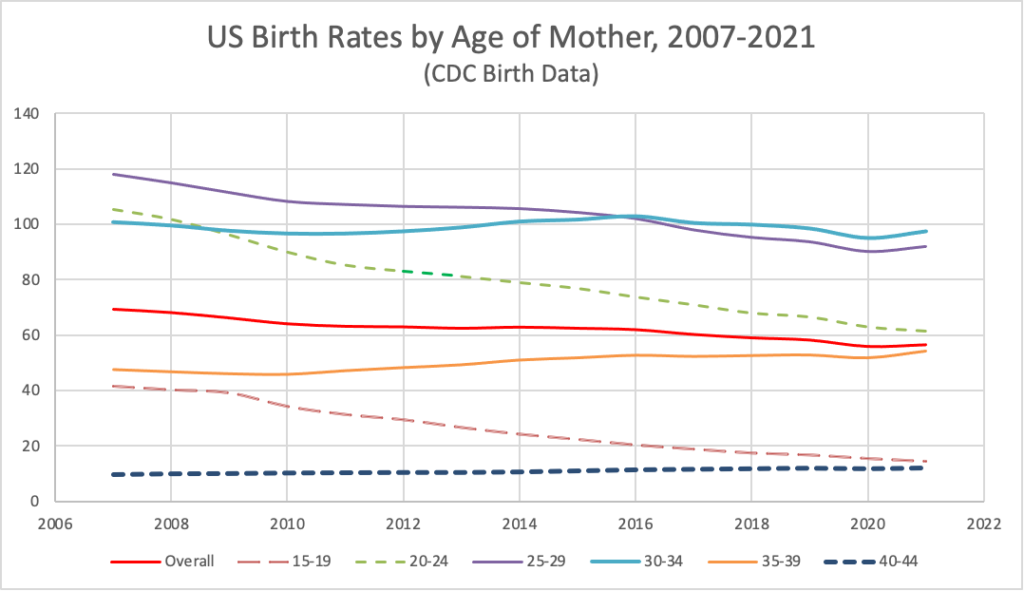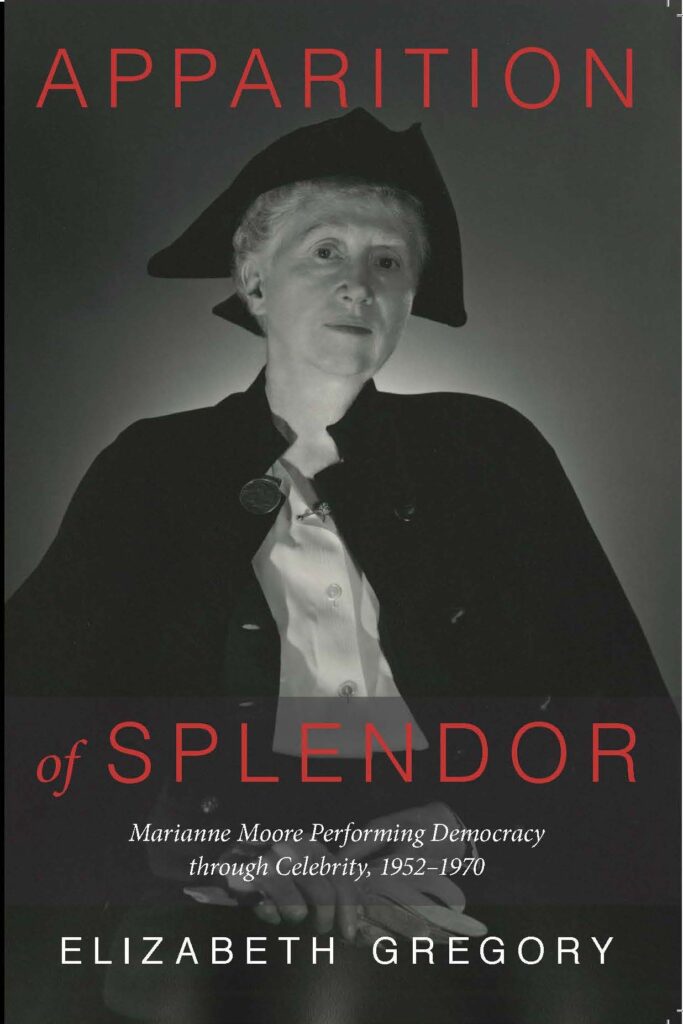In 2022, per the CDC‘s newly issued final birth data report for that year, the overall fertility rate fell 1%, and the ripple effect pattern of delay evidenced in 2021 continued. Births among women under 25 continued to decline, while births among women 25 and over continued to rise (excepting rates for women 30-34, which remained essentially unchanged, falling 0.1%, after a 2.8% rise in 2021). Fertility rates for teens declined 2%, rates fell 7% for women aged 20–24, rose 1% for women 25–29, 3% for women 35-39, 5% for women 40–44, and rose 12% for women aged 45-49 (the first % increase since 2016).
2022 continued both a 19.2% overall fertility rate decline since 2007 (including slight rises in 2014 and 2021) and a 67.2% steady decline in births to teens 15-19 over the past 15 years – from 41.5 births per thousand women 15-19 down to 13.6. This radical change in teen births has created big workforce ripple effects (see my piece on the New Pronatalism, below ).

Among women having a first birth in 2022, the trends continued among women in all age sectors, with rates declining among women 24 and under and rising among women 25 and older.

The average age of mother at first birth rose to a new high of 27.4. The total fertility rate (the predicted total number of births / woman at current rates) declined to 1.65 births / woman. Fertility rates declined for unmarried women but increased for married women. The 2022 nonmarital fertility rate at 37.2 births/1,000 unmarried females aged 15-44 was 28% lower than the peak of 51.8 in 2007 and 2008 – and seems directly related to the fall in births to younger women. The fertility rate for married women increased 1% in 2022, to 84.2 per 1,000 married females aged 15-44.
Post-Abortion-Ban Effects
Births in 2022 were unaffected by the Dobbs decision, since that was handed down in June 2022, and any sequent births due to lack of abortion access in ban states occurred in 2023 and after. The 2023 data will be out in the CDC’s provisional report later this year and in the final report likely in Spring 2025.
Data on 2022 births in Texas after the 6-week abortion ban that went into effect in 2021 are reported in UH IRWGS’s 2022 Texas Repro Health update.







